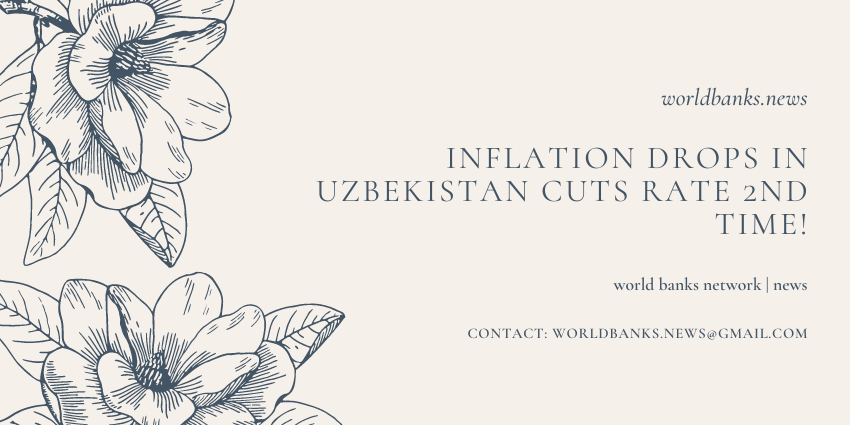Inflation drops in Uzbekistan cuts rate 2nd time!
Uzbekistan’s central bank lowered its policy rate for the second time this year, saying the absence of upward pressure on inflation gave it monetary policy room to maintain moderately positive real interest rates and economic activity during the COVID-19 pandemic.
The Central Bank of the Republic of Uzbekistan (CBU) cut its refinancing rate by another 100 basis points to 14.0 percent and has now cut it 200 points this year following a cut in April when it cut the rate for the first time in 5 years on a faster-than-expected decline in inflation.
CBU maintained its forecast for inflation to decline to between 11.0 and 12.5 percent by the end of the year but added there is an increased likelihood that inflation will be in the low end of that range, and the forecast could even be lowered due to a steady fall in inflation expectations.
Inflation in the Central Asian country fell to 11.7 percent in August from 14.4 percent in July and said itself, along with the government, will take all necessary measures to reach its inflation target of 5.0 percent by 2023.
For the first 8 months of the year inflation slowed to 11.6 percent from 15.2 percent at the end of 2019, below the expected trajectory due to the government’s decision to defer any increase in electricity and gas tariffs, the impact of quarantine restrictions on domestic demand, lower incomes and employment.
In addition, CBU said there has been an absence of devaluation pressure on the som as the weakening of its exchange rate in April was offset by a stabilization.
At the beginning of this year CBU began transitioning to an inflation targeting regime, with the aim of lowering inflation to 10 percent in 2021 and then 5 percent in 2023. As part of a new central bank law adopted in November last year, the central bank has also been given a broader supervisory role over the banking system and has begun issuing economic forecasts in line with international practices.
The exchange rate of the som fell almost 6 percent in April following the central bank’s rate cut and since then it has resumed a more steady decline. Today it was trading around 10,291to the U.S. dollar, down 7.7 percent since the start of the year.
CBU said it expects the som to trade close to its fundamental trend, without “serious fluctuations.”
In late April CBU’s president said there would be no shortage of foreign currency as the central bank had received a $200 million advance from the Federal Reserve Bank of New York and then in May received an additional $400 million, according to local news reports.
A recovery of Uzbekistan’s economy – which relies on gas exports and remittances from workers in Russia – is expected to be gradual as the shock of measures to contain the coronavirus weak off but a return to pre-crises levels will be protracted due to low growth in income and the more cautious behavior of economic agents, the central bank said.
After a gradual recovery of economic activity in the May to June period, CBU said there was a slightly decrease in July and August, and the number of transactions processed through the banking system those months fell by 8 percent and 9 percent compared with June.






















